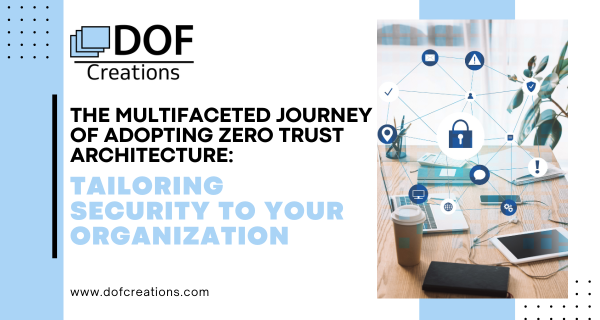Understanding Zero Trust: A Primer
Zero Trust is not a product you can purchase but a comprehensive approach to network security that requires rigorous identity verification for every person and device trying to access resources on a private network, regardless of whether they are sitting within or outside of the network perimeter. This paradigm shift calls for meticulous planning, strategic implementation, and ongoing management, underscoring the fact that Zero Trust is a journey rather than a destination.
The Unique Starting Points of Organizations (A)
Every organization’s Zero Trust journey begins at a different starting point, influenced by their existing security posture, infrastructure complexity, regulatory requirements, and business objectives. For some, the journey might start with the need to secure remote access to critical resources, while for others, it could be about protecting sensitive data from insider threats. The diversity in these starting points necessitates a customized approach to designing and implementing a Zero Trust architecture.
Tailoring the Zero Trust Solution (B)
Since no two organizations are alike, the end solution—Zero Trust Architecture—must be tailored to meet the specific needs of each organization. This involves selecting the right mix of technologies and strategies, such as multi-factor authentication, least privilege access, micro-segmentation, and encryption, to name a few. The choice of tools and techniques depends on various factors, including the types of applications in use, data sensitivity, user mobility, and the overall IT and security budget.
The Diverse Journey from A to B
The process of transitioning from a traditional security model to a Zero Trust framework can vary significantly between organizations. Here are some of the factors that make each journey unique:
- Assessment and Planning:
The initial assessment phase helps identify the specific assets that need protection. This phase can vary greatly depending on the size of the organization, the industry sector, and existing security measures. Crafting a roadmap for Zero Trust implementation requires a thorough understanding of the current state and a clear vision of the desired end state. - Technology Selection and Integration:
Choosing the right technologies and integrating them into the existing IT infrastructure is a complex task that differs for every organization. Factors such as legacy systems, cloud adoption, and mobile workforce requirements play a significant role in determining the technology stack for Zero Trust. - Policy and Control Implementation:
The policies and controls that enforce Zero Trust principles must be customized to fit the organizational culture, regulatory environment, and specific risk tolerance levels. This includes defining user roles and access policies, data protection strategies, and incident response plans. - Education and Culture Change:
Adopting Zero Trust requires a shift in organizational culture towards security mindfulness. The extent and nature of training and awareness programs needed will vary, emphasizing the importance of security in every employee’s daily routine. - Continuous Monitoring and Adjustment:
Zero Trust is not a “set it and forget it” model. Continuous monitoring, analysis, and adjustment of security controls and policies are essential to adapt to new threats, technologies, and business changes. This ongoing process looks different for each organization, influenced by their specific operational dynamics and threat landscape.
Conclusion
The journey to Zero Trust is a unique and ongoing process for every organization. It demands a deep understanding of one’s specific requirements and challenges, a strategic approach to technology selection and integration, and a commitment to continuous improvement. By recognizing that there is no universal path to Zero Trust, organizations can better tailor their approach to creating a robust and resilient security posture that aligns with their unique needs and objectives. As the digital landscape continues to evolve, the principles of Zero Trust offer a flexible and effective framework for safeguarding critical assets against ever-present and emerging threats.

